Posted March 28, 2024 by Tiffany Lee
In case you missed these stories highlighting research and creative activity at the University of Nebraska-Lincoln, the Office of Research and Economic Development’s communications team has compiled a roundup of some recent top stories from research.unl.edu and other sources.
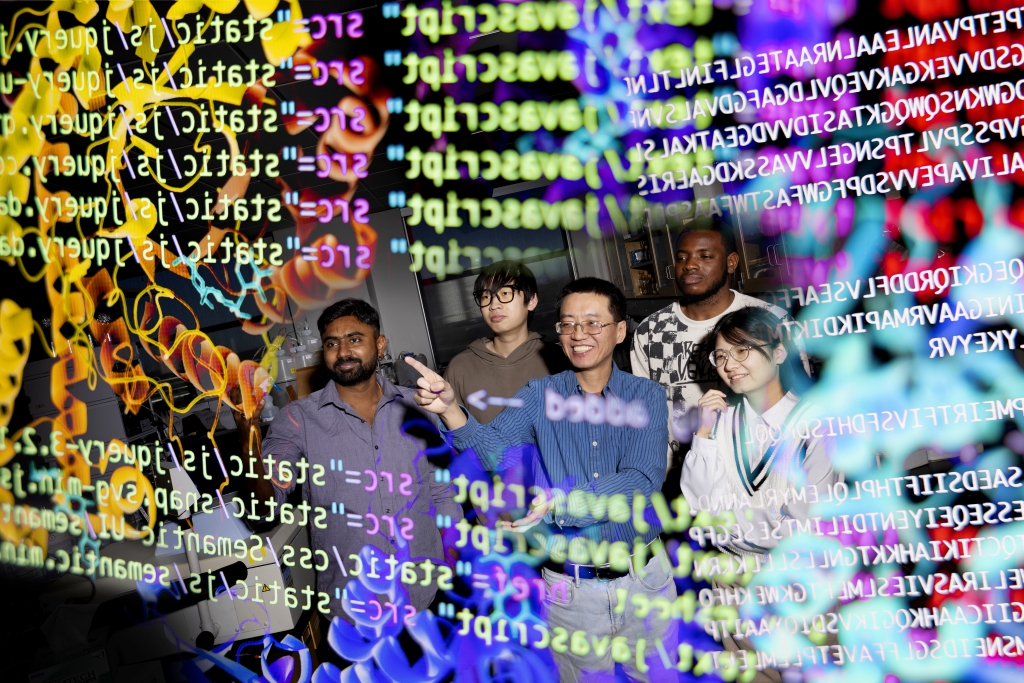
Husker scientist aims for personalized nutritional medicine
Who: Yanbin Yin, professor of food science and technology
What: Yin has spent more than a decade exploring how analysis of the human gut may pave the way for precision medicine, where doctors are able to make treatment decisions that account for individual differences in patients. Recently, he’s been expanding the computational models and informatics tools that power the dbCAN web server, which he launched in 2012 to analyze and classify the gut microbiome’s carbohydrate-active enzymes. These enzymes’ activities produce metabolites that profoundly influence human health. Yin is using National Institutes of Health funding to enhance the database’s computational and artificial intelligence powers. The increasingly sophisticated tool will help health professionals pinpoint dietary supplements to treat diseases like obesity and diabetes in individual patients.
“If you give two different people the same diet, they will respond to it differently. One person might benefit from that diet, but person two would not just because their gut bacteria is different,” said Yin, a member of the Nebraska Food for Health Center.
Writer: Dan Moser, Office of Research and Economic Development
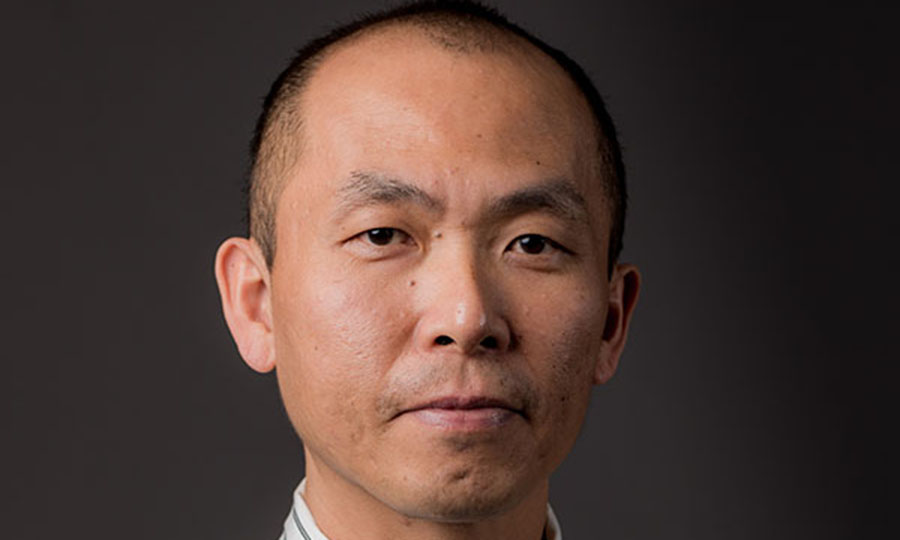
Fulbright Award to support Ho in study of pavement performance in Finland
Who: Chun-Hsing (Jun) Ho, associate professor in the Durham School of Architectural Engineering and Construction
What: Ho, a civil engineer with expertise in construction materials and pavement systems, was selected as a Fulbright U.S. Scholar for the 2024-25 academic year. He will spend six months in Finland evaluating the impact of freeze-thaw cycles and moisture damage on pavement performance in that country. Ho will partner with Pauli Kolisoja, a professor at Tampere University in Tampere, Finland, who leads the TerraRoad research group. Ho said the collaboration will lay the groundwork for a deeper partnership between UNL and Tampere.
“This proposal was prepared with springs of hope that we can pursue a National Science Foundation International Research Experiences for Students (IRES) grant to create an exchange program for students from both universities,” Ho said. “We want to show how this can benefit both faculty and students by establishing a partnership that can last a long time.”
Writer: Karl Vogel, College of Engineering
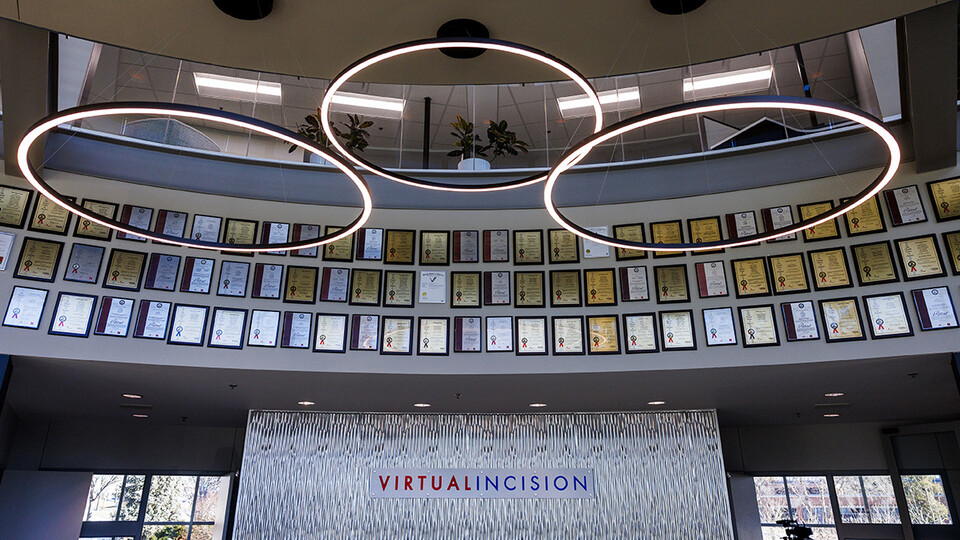
Nebraska rises among world’s best for earning patents
Who: Innovators from the University of Nebraska system
What: The University of Nebraska improved its ranking among the world’s leading academic institutions for earning patents. In a recent report from the National Academy of Inventors, the NU system ranks 73rd worldwide after earning 46 U.S. utility patents in 2023. Nebraska was No. 79 in 2022 and has been on the top 100 list for seven consecutive years. Husker patent recipients in 2023 include Ozan Ciftci, Morrison Distinguished Professor of Food Engineering, who is developing 3D printed foods that meet individual nutrition needs; Barry Chin Li Cheung, associate professor of chemistry, who is focused on applications of cerium oxide; and Virtual Incision, a startup co-founded by Shane Farritor, Lederer Professor of Engineering, that developed a robot for abdominal surgeries.
“The positive impacts of this research are incredible – launching startup companies; generating local jobs; and offering career-shaping lab experiences to our students that have them ready to work on day one,” said UNL Chancellor Rodney D. Bennett.
Writer: University Communication and Marketing
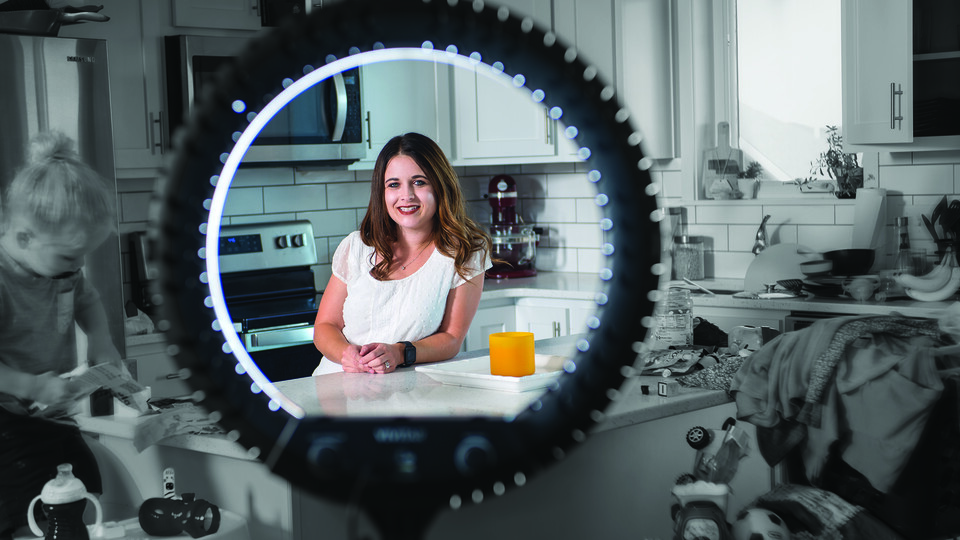
Nebraska study illuminates social media trap for new moms
Who: Ciera Kirkpatrick, assistant professor of advertising and public relations
What: Kirkpatrick’s research focuses on how media messaging affects individuals’ mental and physical health. She previously found that exposure to idealized portrayals of motherhood on social media increased anxiety and envy among new moms. In a study published March 1, Kirkpatrick delved further into this phenomenon, finding that people with a higher social comparison orientation – or tendency to compare oneself to others – were more likely to have a lower perceived parenting competence when exposed to idealized Instagram photos compared to moms with a lower social comparison orientation. Her ultimate goal is to help health practitioners identify patients who are more vulnerable to the media landscape.
“If we know how these posts are affecting mothers and that they are more detrimental to certain moms, then that helps us, from a strategic health communications or health professional standpoint,” Kirkpatrick said.
Writer: Deann Gayman, University Communication and Marketing
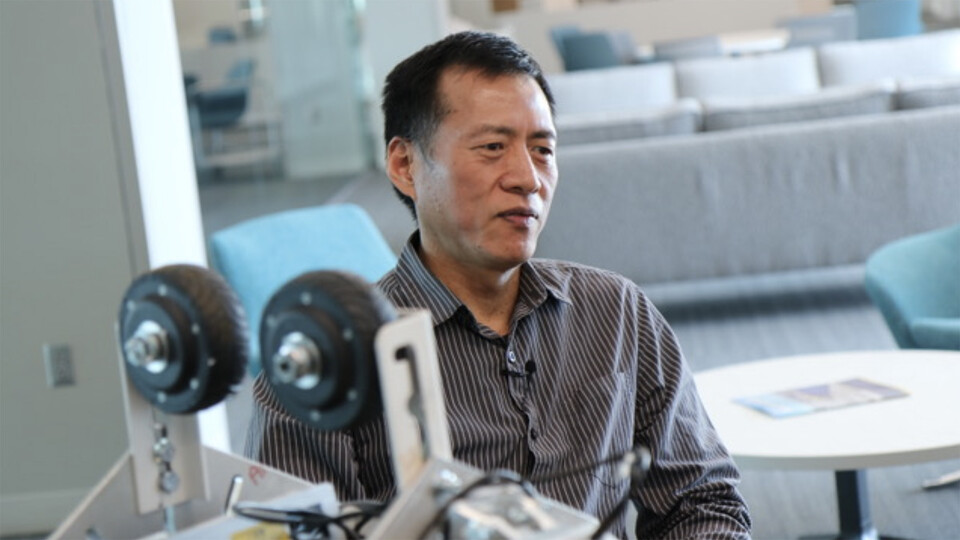
Shen’s innovative camera focused on improving pipeline safety, reliability
Who: Zhigang Shen, professor in the Durham School of Architectural Engineering and Construction
What: More than 2.7 million miles of pipeline shuttles natural gas across the United States, but the condition of most of the large networks – many of which are aging – is unknown. Shen is developing a patent-pending camera system capable of efficiently identifying internal defects in these pipelines. His depth camera array system generates 3D pipeline models that detect corrosion, dents and cracks in a time- and cost-efficient manner. The system produces results more quickly than other products on the market; is operative in remote areas; and is compatible with multiple pipe materials including concrete, metal and plastic. The technology is being offered by NUtech Ventures, UNL’s commercialization affiliate.
“Unlike many other pipeline tools, our system does four things simultaneously: measuring, mapping, modeling and detecting,” Shen said. “We believe our technology provides a unique solution to this significant and difficult industry problem.”
Writer: Julie Naughton, NUtech Ventures
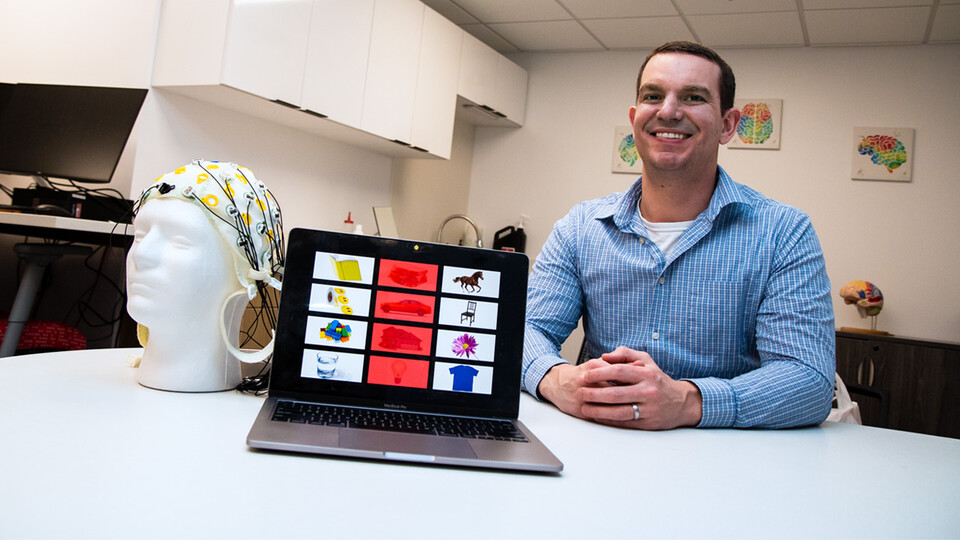
Brain-connected technology opening doors for children with severe speech, physical challenges
Who: Kevin Pitt, assistant professor of special education and communication disorders
What: Pitt is working to bring brain-computer interface technology – which helps determine a person’s intent based on their brain activity – to a population that has been left on the margins of this cutting-edge mode of communication: children with severe speech and physical impairments, or SSPI. He is leading a National Institutes of Health-funded project where participating children will view pictures that are highlighted for a short time. When the desired item is highlighted, the user’s brain emits an electrical spark detected by the system, enabling nonverbal communication. Pitt’s team will track participants’ progress and gather feedback about how to make the platform fun and engaging for children.
“This will help expand the technology to a population that has been underserved,” Pitt said. “I’ve always been motivated by helping kids participate, play and interact within their environment. We are one of the few labs in the world starting to think about how to promote clinically oriented, person-centered BCI-AAC (augmentative and alternative communication) access for children.”
Writer: Chuck Green, Nebraska Center for Research on Children, Youth, Families and Schools
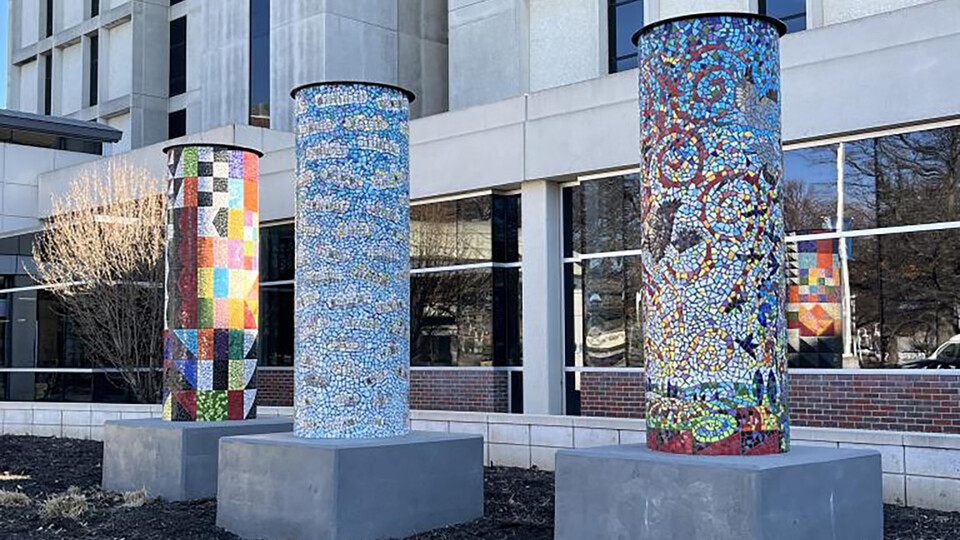
Dominguez creates art commemorating COVID-19 pandemic
Who: Eddie Dominguez, professor of art (ceramics)
What: Dominguez recently completed a public art project for Bryan Health Systems to commemorate the community’s experiences during the COVID-19 pandemic. Bryan East is home to a mosaic mural that includes a cluster of clouds with words submitted by hospital staff, who were asked to reflect on their pandemic experiences. At Bryan West, there are three nine-foot pillars with mosaics. The art was funded by community members who wanted to establish a permanent “thank you” to the hospital system. Dominguez involved six Husker students in the project, including a participant in the Undergraduate Creative Activities and Research Experience program.
“This provided an opportunity … to leave something for my community that I’m a part of,” he said. “And the hospital is just a few blocks from my house, so it even felt like it was in my neighborhood. It was a rewarding feeling. And that’s why I think public art is important because we can generate community interest in it, through it, with it.”
Writer: Kathe Andersen, Hixson-Lied College of Fine and Performing Arts

Nebraska team premieres film based on enslaved man’s diary
Who: Michael Burton, assistant professor in textiles, merchandising and fashion design; Kwakiutl Dreher, associate professor in English; and William Thomas, professor of history and Angle Chair in the Humanities
What: The Husker team produced “The Diary of Michael Shiner,” a short film that premiered Feb. 29 during the Omaha Film Festival and will screen at the Phoenix Film Festival in April. It tells the story of the day that Shiner, an enslaved man who lived from 1805 to 1880 in the Washington, D.C., area, saved his wife from notorious slave traders. Though there are few known diaries kept by enslaved people, Shiner recorded 56 years of his life in great detail. The film – the fourth produced by Animating History, founded by Burton, Dreher and Thomas – was produced with support from an interdisciplinary grant Burton received from the Office of Research and Economic Development.
“We paged through all 186 pages of Shiner’s diary last summer at the Library of Congress, and we were amazed by his indelible memory of people, dates and locations,” Burton said. “His stories about life at the Naval Yard and politics in Washington paint a clear picture of society at that time.”
Writer: Kelcey Buck, College of Education and Human Sciences
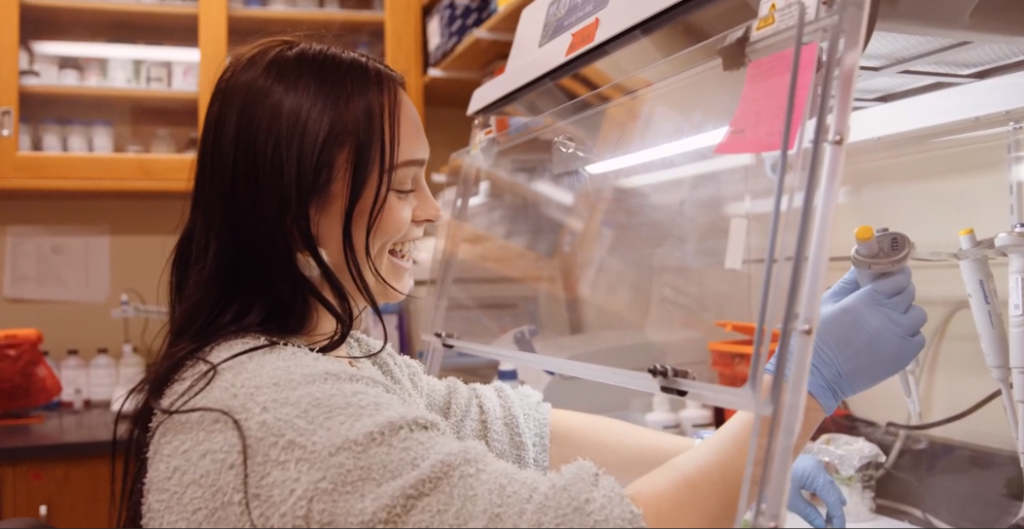
Research boosts IANR undergrads’ educational, personal development
Who: Undergraduates in the Institute of Agriculture and Natural Resources
What: Departments in IANR are maximizing students’ learning experiences outside the classroom through research-focused internships, faculty mentoring opportunities and undergraduate research events. Department advisers help students tailor their experiences to their individual needs. Current students and alumnae in IANR say the institute’s focus on providing undergraduates with real-world experience is a crucial stepping stone to professional success.
“(The University of Nebraska–Lincoln) understands that half of your learning happens outside of the classroom,” said Lauren Wilson, a senior plant pathology major who plans to pursue a career in the genetics of plant pathology. “Students have access to work for industry-research professionals, where they learn skills to navigate and build a work ethic” needed for professional life.
Writer: Geitner Simmons, Institute of Agriculture and Natural Resources Media





